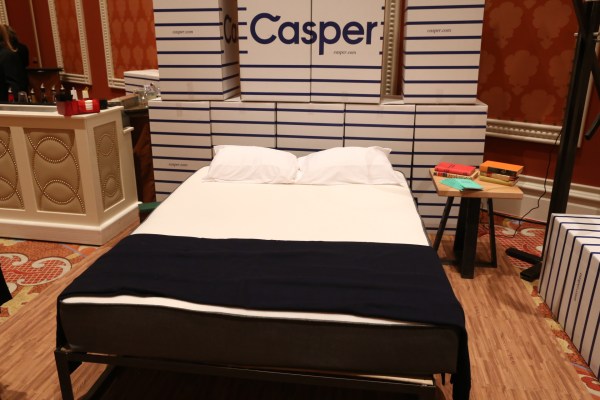Hello and welcome back to our regular morning look at private companies, public markets and the gray space in between.
Casper, the well-known D2C mattress company, has lowered its IPO price range in a new S-1/A filing made public this morning. The repricing leads to a lower expected valuation for the former startup and a lower IPO raise.
The decision by Casper to shoot lower in its IPO comes after One Medical priced its own public offering conservatively last week, but it was rewarded by the public markets with a dramatic gain in value. That positive reception does not appear to have been enough to help Casper’s IPO pricing cycle.
Let’s calculate Casper’s new valuation range and expected fundraise, figure out its implied revenue multiples, and see if the resulting figures make sense when compared to Purple, its public competitor. For tech-enabled companies heartened by One Medical’s public offering, this is the other side of the coin.
New math
According to Casper’s latest S-1 filing, the company will target a $12 to $13 per share IPO range, selling 8.35 million shares, a figure that could rise to 9.6 million inclusive of equity reserved for its underwriting banks to purchase if they wish.
At the low end of its range, $12 per share, the company would raise $100.2 million at a valuation of $475.6 million. At $13, those figures expand to $108.6 million raised at a valuation of $515.2 million. (You can add $15 million to the low and $16.3 million to the high to include the potential value of shares reserved for underwriters.)
Those figures give Casper at best a valuation of less than half its final private price tag, set when it raised $100 million at a valuation that Crunchbase puts at $1.1 billion post-money. For Casper and its investors and other shareholders, the decline in funds that it may raise and the anticipated value of the firm are a disappointment.
Recall that its earlier, proposed IPO pricing was already a let down when compared with its private market valuation. When the firm was targeting $17 to $19 per share, we reported that:
Exclusive of underwriter shares, Casper is worth between $666 million and $744 million [at those prices], figures that rise to $687 million and $768 million with the [underwriter-reserved] equity added in. Recall that Casper was valued at $1.1 billion when it raised $100 million back in March of 2019. In about 10 months, then, Casper’s valuation has dropped by as much as 40%. On the upper end, the haircut is a slimmer, but still stern, 30% reduction.
Those price declines now feel somewhat tame in comparison to what the company is prepared to endure to go public. (The company worked to raise more private capital ahead of its initial S-1 filing, The Information reported this week, but it wound up choosing to go public instead.)
Now, let’s compare Casper to the its public comp, Purple, to see how it stacks up.
Purple
Fellow mattress company Purple has not released its Q4 2019 earnings yet, annoyingly. But we can use its metrics to do some fun comparisons all the same. Per YCharts and our own data collection, here are some metrics for Purple:
- Current market capitalization: $714.1 million.
- Trailing twelve-month revenue: $382.6 (Q4 2018 + the first three quarters of 2019).
- Trailing revenue multiple: 1.87x.
- Profitable on an adjusted basis? Yep (first three quarters of 2019).
- Profitable on a GAAP basis? Yep (first three quarters of 2019).
And now, Casper:
- Expected market capitalization: $475.6 million to $515.2 million (midpoint: $495.4 million)
- Trailing twelve-month revenue: $437.3 million and $441.3 million (midpoint: $439.30 million)
- Trailing revenue multiple, midpoint: 1.12x
- Profitable on an adjusted basis? Nope
- Profitable on a GAAP basis? Nope
We didn’t include a lot in there, like growth (Purple is growing far more quickly than Casper), but you can see why the private company struggled to match or best Purple’s revenue multiple. Why should it get a similar or better multiple when it isn’t similarly profitable?
The Casper IPO pricing change appears to makes sense. Watching One Medical price at the lower-end of its range, given our understanding of its financials, also made sense. What happened after One Medical went public, however, was a bit more intriguing. The markets are valuing One Medical like a SaaS company when it isn’t. Perhaps Casper will also receive a warmer welcome after it prices later tonight and begins to trade in the morning.
We’ll see.
